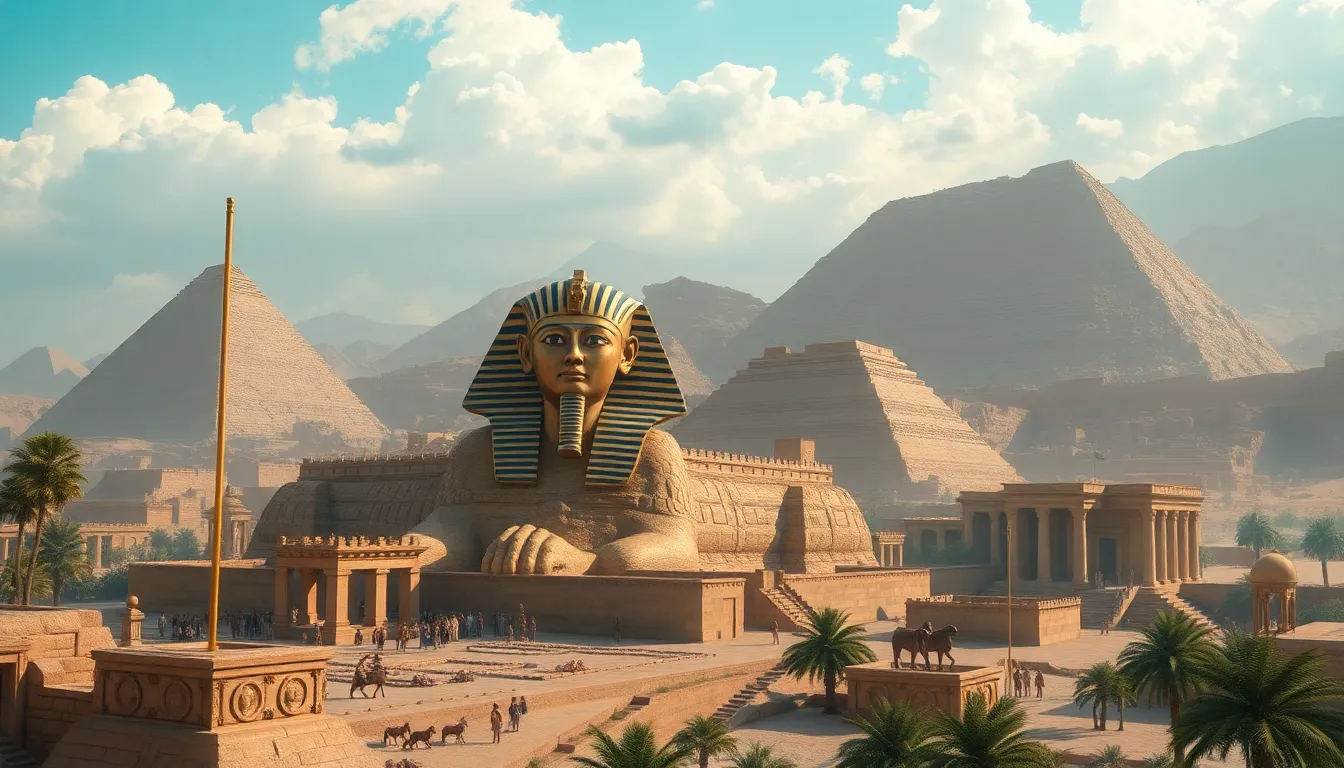Pharaohs and Their Myths: The Legends That Built a Civilization
I. Introduction
Ancient Egyptian civilization is one of the most fascinating and enduring cultures in human history. Spanning thousands of years, it is renowned for its grand monuments, intricate hieroglyphs, and a rich tapestry of myth and religion. At the heart of this civilization were the pharaohs, who were not only political rulers but also considered divine beings.
The significance of pharaohs in ancient Egypt cannot be overstated. They were seen as the earthly embodiment of gods, wielding immense power and authority over their subjects. This article explores the myths surrounding these iconic figures, delving into how these legends shaped the identity, governance, and spiritual beliefs of ancient Egyptians.
II. The Role of Pharaohs in Ancient Egypt
Pharaohs played a crucial role in the political and spiritual landscape of ancient Egypt. Their responsibilities included:
- Political power and governance: Pharaohs were the supreme rulers, responsible for maintaining order, justice, and prosperity in their kingdoms.
- Spiritual significance and divine right to rule: Pharaohs were believed to be chosen by the gods, possessing a divine right to govern and protect their people.
- Intermediaries between gods and people: They acted as mediators between the divine and the mortal realms, conducting rituals to appease the gods and ensure the welfare of their subjects.
III. Creation Myths and Their Influence on Pharaohs
Creation myths in ancient Egypt served to explain the origins of the world and the role of the pharaoh within it. Key creation myths include:
- Atum: The first god who created himself and brought forth other gods.
- Ra: The sun god, who was central to Egyptian mythology and was often associated with the pharaoh.
These myths justified the pharaoh’s role as a ruler. The symbolism of the pharaoh in these narratives depicted them as a reflection of the gods, reinforcing their authority and divine mandate to rule. For instance, the sun god Ra was often depicted as the protector of the pharaoh, signifying their divine connection.
IV. Legendary Pharaohs and Their Stories
Throughout ancient Egyptian history, several pharaohs have emerged as legendary figures, their stories interwoven with myth and lore. Notable pharaohs include:
- Ramses II: Known as Ramses the Great, he is often regarded as one of Egypt’s most powerful pharaohs. His reign was marked by military conquests and monumental architecture, including the famous temples at Abu Simbel. Legends claim he was a living god, whose power was unmatched.
- Tutankhamun: Perhaps the most famous pharaoh due to the discovery of his nearly intact tomb. His short reign and mysterious death have given rise to numerous myths, including the infamous “curse of the pharaohs,” which suggests that those who disturb his tomb will face misfortune.
The myths surrounding these pharaohs have significantly impacted Egyptian culture, shaping national identity and influencing art, literature, and religious practices for centuries.
V. The Afterlife and the Myths of Resurrection
Beliefs about the afterlife were central to ancient Egyptian culture. The pharaohs, in particular, played a vital role in funerary practices and tomb construction:
- Beliefs about the afterlife: Egyptians believed in an afterlife where the soul would be judged. A successful judgment would grant the soul eternal life.
- Funerary practices: Pharaohs were buried in elaborate tombs, filled with treasures and goods for the afterlife. The construction of the pyramids is a testament to their belief in immortality.
- Myths of resurrection: Stories such as that of Osiris, who was resurrected after being killed by his brother Set, highlight the importance of resurrection myths in reinforcing the pharaoh’s divine status and the belief in life after death.
VI. The Intersection of History and Myth
When studying ancient Egypt, it is essential to distinguish between historical facts and mythological embellishments. While pharaohs certainly existed and ruled, many stories about them have been enhanced or altered over time. Myths shaped the historical narrative, creating a blend of reality and legend.
Archaeology plays a crucial role in uncovering the truth behind these myths. Discoveries of tombs, artifacts, and inscriptions provide insights into the lives of pharaohs and the beliefs of ancient Egyptians, helping to piece together a more accurate historical picture.
VII. The Legacy of Pharaoh Myths in Modern Culture
The influence of pharaoh myths extends far beyond ancient times, permeating modern culture in various ways:
- Influence on literature, film, and art: Stories of pharaohs have inspired countless works of fiction, films, and artistic interpretations, captivating audiences with tales of power, mystery, and intrigue.
- Public perception: Modern interpretations of pharaoh myths continue to shape how we view ancient Egypt, often romanticizing and dramatizing their lives and legacies.
- Ongoing fascination: The allure of ancient Egyptian mythology persists, with ongoing research and popular media keeping the stories alive in contemporary society.
VIII. Conclusion
The myths surrounding pharaohs are vital to understanding their significance in ancient Egyptian civilization. These legends not only highlight the political and spiritual roles of pharaohs but also reflect the values and beliefs of an entire culture.
The enduring legacy of pharaohs and their myths continues to captivate the imagination, reminding us of the rich historical tapestry that has shaped human civilization. As we preserve these stories, we honor the past and ensure that future generations can appreciate the profound impact of ancient Egyptian mythology.




